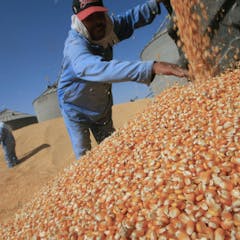
Articles on Genetic engineering
Displaying 1 - 20 of 40 articles

Early human development is a complex, multistep process that’s even more complicated to study in the lab. Models made from stem cells avoid some of the trouble with using real human embryos.

New research sheds light on the interconnected nature of the human genome and what this means for future gene therapies.

A proof-of-concept study using bacteria shows cell therapy can detect tumours – and may one day be able to treat them.

Scientists can create viable eggs from two male mice. In the wake of CRISPR controversies and restrictive abortion laws, two experts start a dialogue on ethical research in reproductive biology.

A new book argues our philosophical and intellectual responses to technology have not kept pace with events.

Kenya’s GMO policy about-turn was underpinned by improved safeguards on top of a commitment to review each new application on a case-by-case basis.

The walls of your house could someday be built with living bacteria. Synthetic biologists are engineering microbes into living materials that are cheap and sustainable.

Plant breeding, informed by genetic analysis, could be critical to the future of one of the world’s oldest crops.

As genetic engineering and DNA manipulation tools like CRISPR continue to advance, the distinction between what science ‘could’ and ‘should’ do becomes murkier.

Recent successes putting genetically modified pig organs into people have brought xenotransplantation back into the spotlight.

There’s a new label on many US food products – here’s what it means and who pushed to add it.

An expert on organic agriculture argues that the US is missing an economic and environmental opportunity by not working to scale up organic production.

Solutions to some of the globe’s most daunting environmental challenges may be closer than you think. Scientists are harnessing nature to clean up toxic chemicals and mining waste.

Researchers have grown the first human-monkey hybrid embryos as well as mouse embryos in artificial wombs late into development. These biomedical breakthroughs raise different ethical quandaries.

New research involving CRISPR technology has furthered our understanding of corals’ gene functions. Specifically, it has revealed a mechanism underpinning how corals withstand heat stress.

The evidence suggests the novel coronavirus evolved naturally.

The conspiracy theory that Covid-19 was created in a laboratory has been widely reported, yet there is no evidence to support it. Why such theories thrive can easily be explained, however.

Human changes to the living world have benefited us, but the ecological consequences are mounting.

The FDA has given the green light to sell the first genetically engineered animal – farmed salmon –in the US.

Is gene editing compatible with organic farming? A scholar explains the differences between old genetic engineering and CRISPR methods, and why the latter is similar to tradition plant breeding.
